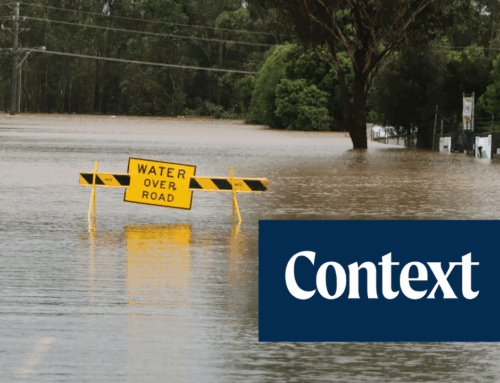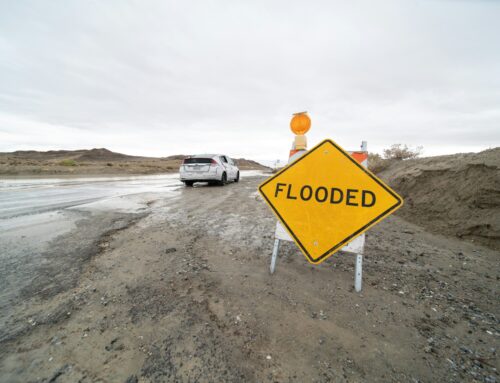Happy Earth Day!
In our last Wastebasket, we delved into how past U.S. policy missteps have failed to achieve climate results – while wasting taxpayer dollars to boot. Ever the budget (and policy) optimists, this week we turn to positing positive possibilities. In preparation for President Biden’s 40-nation Climate Summit beginning today, we have five recommendations on how Washington can steer climate policy in the right direction. Because climate change is real, it’s costly, and it’s solvable. For upcoming budget, infrastructure, climate, and other discussions to achieve real, long-term results, taxpayers must be in the driver’s seat.
But first, we should give this Congress and the president two thumbs up. From day one, they’ve acknowledged that a costly problem lies ahead for communities, the environment, and taxpayers alike, and began to offer climate proposals. Whether you agree with recent proposals (and/or their price tag), it’s encouraging to see Congress introduce legislation and hold hearings instead of speeding bills across the finish line with no opportunity for debate. However, while discussions have jump-started, a long road lies ahead if our country is going to be able to reach a fiscally and environmentally responsible destination on climate.
Learning lessons from past U-turns can ensure a successful journey devoid of policy whiplash. First, the counterproductive, unaccountable policies and perverse incentives we highlighted last week must be ditched once and for all. Otherwise, taxpayer dollars will continue to be wasted on technological bridges to nowhere.
The next step is for Congress and the president to prioritize realistic, cost-effective, accountable, and equitable climate solutions. These are policies that mitigate risk, promote resilience, and spend taxpayer dollars wisely. To achieve these ends, policymakers must:
(1) Make tough choices and prioritize wise investments. We need action on many fronts. Clearly identified priorities will help direct taxpayer dollars toward the most effective and efficient projects/policies with the greatest return on investment. Because while everyone is affected by climate change, some communities are more immediately vulnerable. And not all “solutions” are created equal. Federal investments need to be focused where really needed and where real benefits will accrue. So promoting soil and crop appropriate conservation practices, yes, but pouring billions into greenhouse gas emitting biofuels, no.
(2) Get the price right. Key to making choices is understanding real costs. We must price externalities –including climate impacts – into responsible federal policies on greenhouse gas emissions, including methane, and more. The costs are real, we need to acknowledge so. This also includes putting an actual price on carbon. Accounting for real costs allows markets to work. It also better accounts for the costs of inaction and the value of solutions.
(3) Promote accountability. When real costs are known, responsibility can be had. Industries should be held accountable for their efforts to shift short- and long-term climate liabilities onto taxpayers. For example, the oil and gas industry has known for decades their businesses contributed to climate change. Yet, they actively worked against finding solutions. They must be held liable. But it’s bigger than fossil fuels. Agriculture is a potential partial solution, with hundreds of millions of acres as a potential carbon sink. But agriculture also contributes north of 10 percent of GHG emissions. Policy needs to acknowledge both facts and not pigeonhole agriculture (and other industries) as only climate saviors or villains.
(4) Invest in resilience, mitigation, and adaptation. Government does not have every solution, but it does have the ability to create an environment that fosters (or chokes out) development of solutions. Pricing externalities, holding people accountable, and making tough choices is how you do it. We must also help communities and industries prepare before disasters strike instead of solely spending more money after. Disaster re–sponse is important. Pre-sponding to disasters through common sense investments in mitigation ultimately saves more money – and more lives.
(5) Emphasize equity. Everyone is affected by climate change, but some communities – often Black, Brown, Native American, or poor – have paid a higher price. Policy needs to ensure needs of communities that have borne the brunt of past climate impacts are met, federal programs promote equity in mitigation, and undue costs and risks aren’t shifted onto taxpayers and particular communities.
Instead of subsidizing dead end climate policies, the U.S. should prioritize realistic, lasting solutions. Throwing trillions more taxpayer dollars at new climate and infrastructure policies with uncertain outcomes will not steer U.S. climate action in the right direction. Spending taxpayer dollars wisely, efficiently, and equitably, however, will.
This edition of the Weekly Wastebasket is part 2 of 2, the first of which you can read here.










